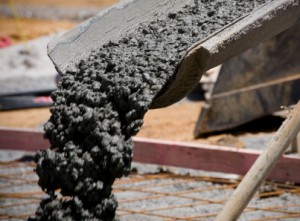Concrete is a durable and reliable building material but even the toughest stuff has to be repaired someday. However, different types of concrete cracks will require different methods to repair them. Here are some steps you can take to repair different types of concrete cracks.

Narrow Cracks
Narrow concrete cracks can be repaired with Masonry Crack Filler that can be purchased in a cartridge form designed to be used in a caulking gun, or in a spreadable putty. First, remove any loose debris surrounding or in the crack with a brush or broom then use the fill the crack and smooth with a trowel.
Wide Cracks
Wider cracks will require more work. First, use a sledgehammer and chisel to widen the base of the crack so that the internal crack is wider than the surface, then clear away any debris. Mix together your vinyl patching compound as directed by the manufacturer and trowel it into the crack. Apply pressure to eliminate air pockets, then smooth with a trowel.
Slabs or Walks
Significantly damaged concrete slabs or walks are best repaired by fully removing and replacing the slab. This is a significantly larger job than repairing simple cracks and will involve more materials and preparation. First, use a sledgehammer to break up the damaged slab, and then remove the largest pieces of rubble while spreading the small ones to create a firm bed for the replacement. Next, set up wooden 2x4s around where the new slab will go. The top edges of the planks should be flush with where the top of the finished slab will sit.
Next, mix your concrete according to manufacturing instructions and dampen the area to be repaired. Fill the area with concrete by beginning in one corner and working towards the center, then selecting another corner and repeating until the concrete reaches the top of the planks. Use another, larger board to scrape away excess concrete and tap the sides of the boards to help settle the mixture. After the water has evaporated smooth the surface with a trowel and wait for the concrete to set. Then use your trowel to pry away the surrounding boards. Cover with a tarp and allow the concrete to cure according to your manufacturer’s instructions.
Need Help?
As you can see, repairing concrete damage can range from a relatively quick fix, to a lengthy process. Employing skilled masons, like those found at PTG Enterprises, can make this process an affordable snap and ensure that your concrete will be fixed quickly and properly.
PTG is a full service commercial concrete masonry contractor in the Baltimore, Maryland area. We’re experts at masonry jobs, whether it’s repairing retaining walls, architectural elements, dumpster corrals or storm drains, PTG Enterprises knows how to handle it.
We’re a paving company that knows how to hit the bricks!
If you have any questions about Concrete Masonry, please contact PTG Enterprises today by calling 410-636-8777, or click here today! You can check us out on Facebook and Twitter as well!
Sources:
Lowes
 Whether they are big or small, the need for concrete cracks will not magically disappear.
Whether they are big or small, the need for concrete cracks will not magically disappear.


















